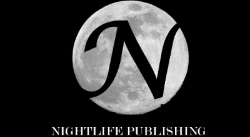Many people use the term "self-publishing" to describe any books that an author releases outside the
traditional publishing industry. Some people use the terms self-publishing and "independent publishing" interchangeably. I feel there is an important distinction between
the two industries and while one isn't better than the other, some writers are
more suited to one than the other.
The Characteristics of
Self-Publishing
To me, self-publishing is an organic process that grows like a flower or a tree:
- The writer decides to write a book and then explores the experience of releasing it into the world.
- The writing itself is often done by a discovery method or "pantsing" (See Plotting vs. Pantsing).
- The post production process (See The Four Stages of Novel Development) is cobbled together ad hoc. The writer either figures out how to do everything on their own (the “self” in self-publishing) or friends and family are recruited to do this work for little or no cost (See the Gift Every Writer Can Give Their Friends and Family)
- The marketing is limited to narrow social media blasts with little no sustained connection with potential readers.
- Additional books may or may not be produced. If they are, there might not be any consistency between books, or any improvement in the post production or release process.
- If a traditional publisher shows interest, the self-publisher will accept that deal as a chance to focus on writing and outsource the other aspects of publishing.
- A self-publisher is often unincorporated or acts as a sole proprietorship.
- The self-publisher focuses primarily on her role as a writer.
The Alternative of
Independent Publishing
By contrast, I see independent publishing as a strategic
process that is identical to a business, except for the normally small size:
- The writer decides to write a book and then creates a long term publishing plan (See What is Your Publishing Plan?).
- The writing itself is often done by plotting according to a specific production schedule (See Why Do We Word Count?).
- The post production process (See The Four Stages of Novel Development) is a coordinated team approach. The writer hires professionals for the editing, cover design, formatting, and any other aspect where she doesn't have expertise. (See Just How Much Does It Cost to Release a Book?)
- The marketing is ongoing, seeking to build connections with potential readers and other writers even when there is no book actively being pushed.
- Additional books are essential. The subsequent books will share a consistent look and feel. They will be released according to an established schedule. As each new book is released, the craft and post production process is improved. (See Overnight Success in Ten Books or Less)
- If a traditional publisher shows interest, an independent publisher will reject that deal unless it fits in with the strategic goals.
- An independent publisher is often incorporated as an LLC for tax and payment purposes.
- An independent shifts their focus across four different roles.
The Four Roles of an
Independent Publisher
An independent publisher
has to be a writer, a corporate manager, a salesman and an experimental social scientist.
Each role focuses on a different side of the process and strives to answer a
different (but related) question.- As a writer, the independent needs to deal with idea development, research, writing, and editing. The main question for the writer is 'What books are being written?'
- As a corporate manager, the independent needs to deal with budgets, selecting and monitoring the post production team, beta reading, cover design, release scheduling, revenue collection and performance evaluation of each book. The main question for the manager is 'How can we produce the best books at the lowest cost?'
- As a salesman, independents handle distribution control, sales copy, marketing, reviews and advertising. The main question here is 'How can we sell the maximum number of books at the lowest cost?’
- As an experimental scientist, the independent deals with the constantly shifting playing field of publishing. He needs to research each aspect of the business, develop theories on what will improve all the other aspects of the business, and test those theories in the real world. The main question here is 'Why do some things work and others don't?'
Whether you use the
self-publishing or independent publishing model is a matter of taste, time and
personal goals. Some writer's need the structure of independent publishing; others
don't want to deal with the inherent tension that comes from the changing
perspectives of independents. Success is
not guaranteed with either method. Ultimately it is our individual writing
goals and not our method that will define our writing (See How Do You Define a Successful Writer?)
Have fun.
Gamal



















